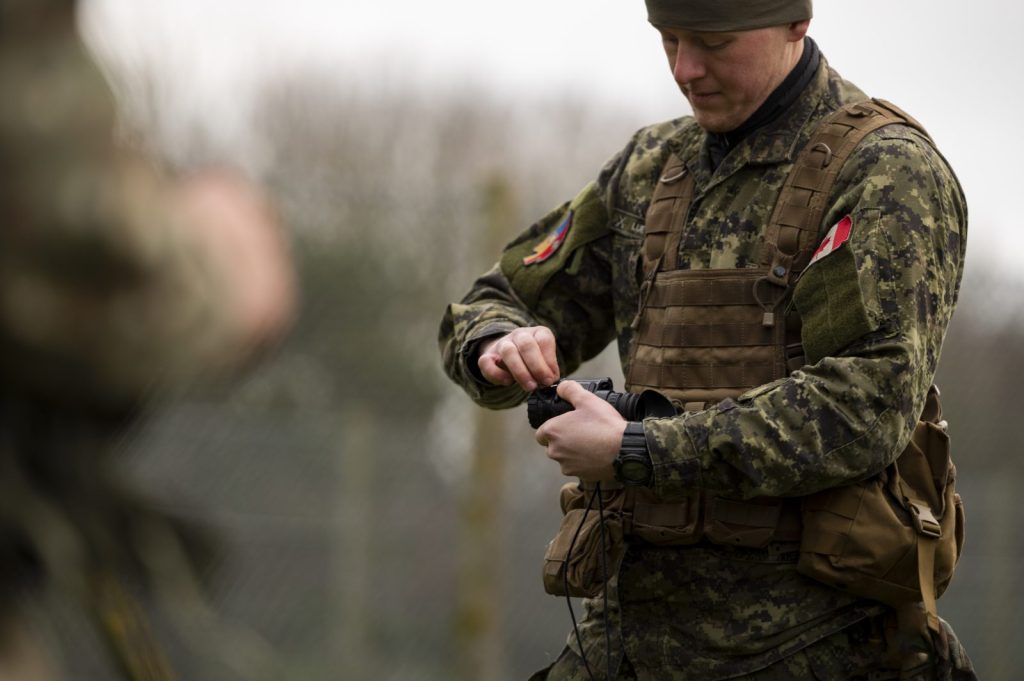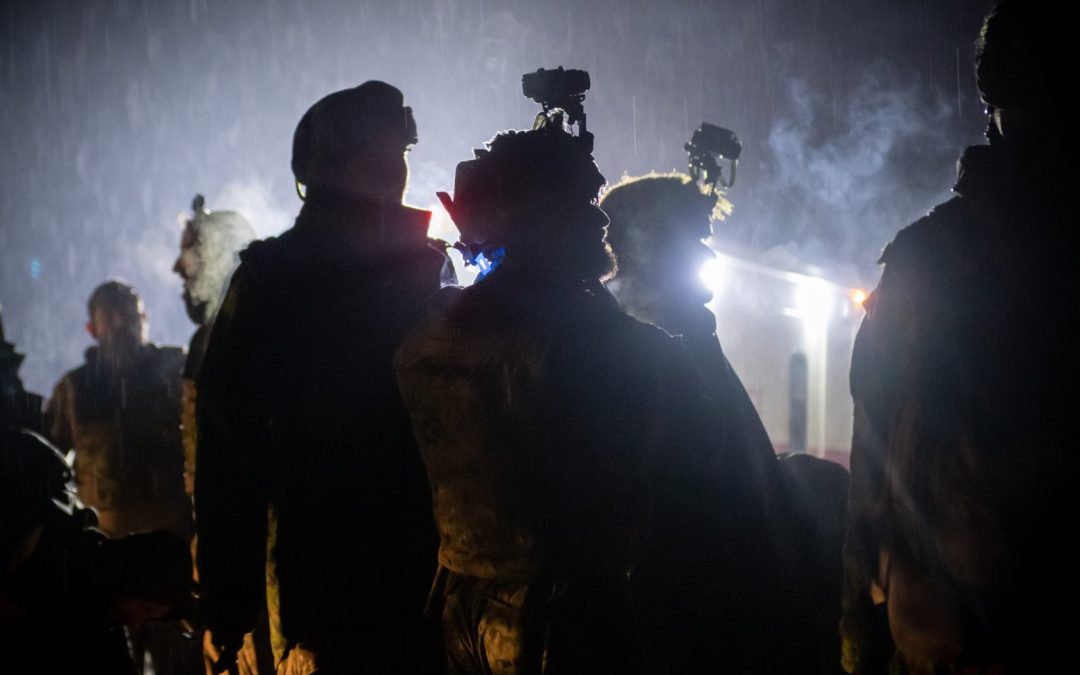by Ken Pole
In its June 2017 defence policy, the federal government used the word “vision” a lot but mostly in a generic contemplative way. However, tucked away on page 36 was a commitment to recapitalizing an outstanding requirement for new “soldier night vision systems.”
It remains a work in progress. The Directorate of Land Requirements (DLR) had identified the need long before the policy paper was released. Now, after years of research and experimentation, a request for proposals could be issued to industry later this year.
“But I temper that by saying that there are a lot of factors involved that are outside of DLR’s influence,” cautioned Captain Marcel Campbell, a member of the Night Vision System Modernization (NVSM) project team, a program that is also addressing Royal Canadian Navy night vision requirements.
The Army calls the overall effort “a multi-phase hybrid project.” Phase 1 is a hand-held long-range laser range finder. Phase 2 includes the night vision goggles, laser aiming devices and hand-held medium range thermal imagers. Phase 3, involving augmented reality and thermal fusion, is further down the road.
Given the length of the project, is there a risk that technology advances will outpace the written requirements?
“We have established the high-level mandatory requirements based on outperforming an adversary,” Campbell replied, which will in part determine how far out the Army needs to see at night. That in turn will inform the statement of requirements and “give us the flexibility to increase our performance requirements as we approach industry for proposals.”
There’s no gainsaying the importance of night vision technology, which has contributed to various Army operations since the turn of the century, most notably the 2001-2014 mission in Afghanistan.
Since then, in a bid to better understand how the technology has evolved, the Army project team has worked with the infantry battalions of 2 and 5 Canadian Mechanized Brigade Groups in Petawawa and Valcartier, respectively. This “tech watch” included trials of various manufacturers’ products in collaboration with Defence R&D Canada (DRDC).
The Army’s most common night vision device is the monocular L3 Harris AN-PVS-14, last upgraded 15 years ago. For now, however, the project team isn’t about to scrap what remains an “excellent” product despite its age.
One option is to replace the image intensifier tube, which amplifies low light level images to where they can be seen by the naked eye. This would bring the AN-PVS-14 up to today’s standards in terms of performance.
Campbell confirmed that “we’re also looking into a binocular night vision device.” The binocular helmet-mounted unit offers better depth perception at close range, but “it’s a question of who specifically needs that more expensive binocular solution – it can be twice the price.”

A soldier with the 3rd Battalion, Princess Patricia’s Canadian Light Infantry, instructs Ukrainian recruits on the operation of the PVS-14 Night Vision Monocular, during Operation Unifier in the United Kingdom in January 2023. Photo: Cpl Eric Greico
Field of view is a critical consideration in whatever the Army procures. “The standard is still 40 degrees, but there are some binocular solutions with a slightly wider field,” said Campbell. “However, you’re sacrificing image clarity. By offsetting the two tubes to get that wider field of view, you get a slightly blurrier picture. There are other solutions with four tubes that give you really good peripheral vision, but it’s too costly and not worthwhile for the Army to consider.”
The added weight of four tubes “isn’t worth the added advantage for what we do,” he noted.
DRDC, which has been deeply involved in the Army’s program, is tapping individual regiments for the advice of experienced personnel on how to proceed, notably about the mono-versus-binocular debate, which Campbell said has been “trialed in relatively realistic scenarios.”
Weight, too, is a concern. Adding more features to a system often means added weight, the last thing soldiers want, even if it’s a minimal increase. “The newer binocular night vision devices do have more weight than the AN-PVS-14, but the added weight is worth the increased capability,” Campbell observed.
He said there are ways to handle increased weight, including counterweights to balance the load. It may seem counterintuitive, but research has suggested that counterweights can reduce torque on a soldier’s neck by reducing the overall burden of the device.
Another critical component of soldier night vision is the ability to see at long ranges. The Army is looking at two solutions for this requirement. While both systems are built around thermal imagers, they incorporate two different technologies.
“One is a cooled device for long range. It’s a little bigger, heavier and requires more power,” Campbell explained. The medium-range uncooled device uses a different thermal channel, “so although it’s lighter, it doesn’t reach out as far” and uses different IR wavelengths.
To advance the project to where it is today, Campbell and previous project directors have kept tabs on allies’ night vision options. “We do look at what they have, and we are actually procuring relatively in line with what they’re doing,” he said. “In terms of hand-held thermal imagers, there aren’t too many manufacturers that can produce what we need, and so they sell fairly broadly throughout NATO.”

